The Beast Tamers
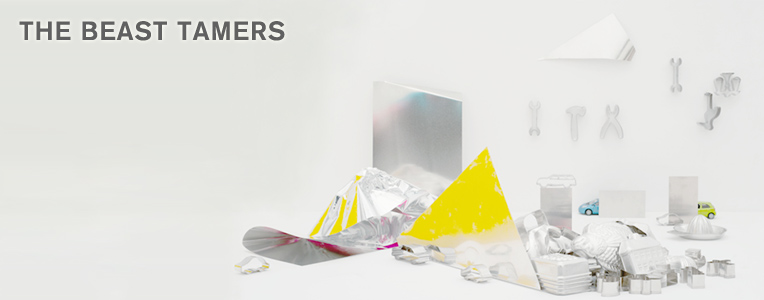
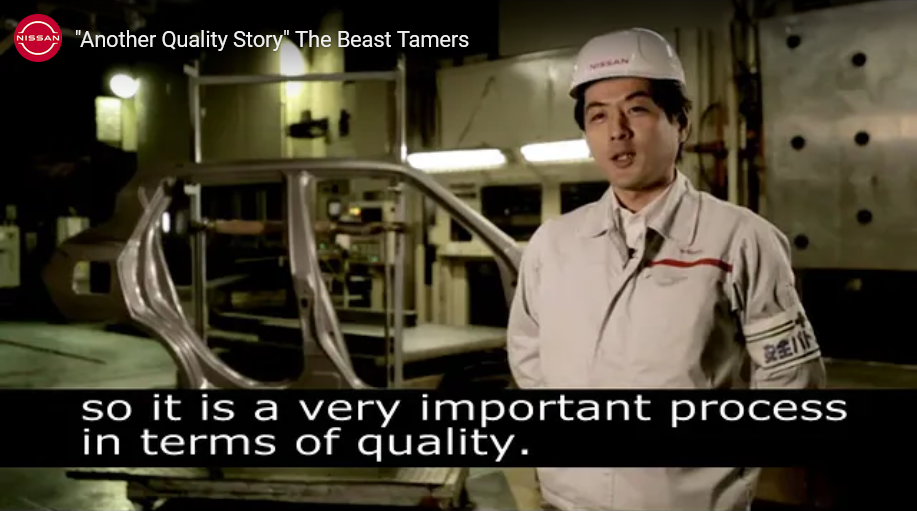
"Another Quality Story" The Beast Tamers3:10
In Nissan's Oppama Plant there exists a monster, a "thing" from whose raw strength comes vehicle shells. They call it the 5,000-ton press, creator of exquisite car bodies.
Boom! Pounding around the factory comes the savage noise of giant objects being brutally crushed. This is the soundtrack to the birth of a car body. The active, eager beast is a press machine that transforms metal into vehicle shells and parts. It works ferociously, side by side with a 5,000-ton and other press machines in the Oppama Plant, each with their own size, role and capability. The larger the machine, the more power and the bigger the material it can process with immense force.
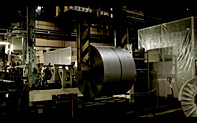
A car body is manufactured from rolls of metal sheets and each metal has its own properties.
But this tribe of animals won't just keep on making car shells if left to their own devices. They need tamers. These specialists assemble the press molds and adjust the load, maintaining a high overall production ratio so that manufacturing can proceed without delays. It's their job to take into consideration the size and number of the parts being made, to create a plan and "command" the beast to create, say, the front panel of a Juke or the side body of a LEAF vehicle. What shape, how much power, what size - the beast cannot decide this on its own.
There are around thirty plant workers taming the 5,000-ton press. Each press differs in the way it is used, so each one requires its own team of experts. To reach the point where you have the skills to find and analyze problems in the presses takes three years. It's in the hands of this well-trained group to domesticate and monitor the machines so that the whole line can operate to its best efficiency and capacity.
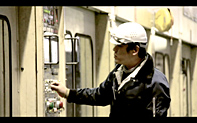
The 5,000-ton press machine at the Nissan Oppama Plant creates large vehicle shell parts, such as car doors or panels. Out of the roughly 100 plant workers operating the press machines, about 30 deal with the 5,000-ton press.
The most critical thing of all is a production line that maintains quality in the car parts. The plant workers thus stand guard over the press machines, passing judgment over the quality of the results. As a critical element of this process they conduct regular visual and a sensory blind check is on the parts. The first pressing is always checked, along with the last, as well as others at periodic intervals. Needless to say, if they find even one with any flaw whatsoever, they look at the whole line again.
And these mistakes in the pressing process are measured in the smallest of units. A fundamental skill of "taming" is being able to make judgments on quality to the micrometer. You might think that surely it would be easier to use a computer but at present, computers just do not have the same degree of assessment skills as a human. For such a complex beast and its spoils, it takes a real person to tame, control and check it.
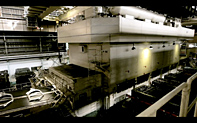
Just one pressing transforms sheets of metal into three-dimensional vehicle parts. The 5,000-ton press can operate 15 times per minute, and around 8,000 times every day. A team of maintenance engineers ensures the accuracy of each pressing.
What likely gets your attention with the 5,000-ton press is its sheer power. But it is also incredibly precise, with an accuracy of 0.5 millimeters. The pressing process is the first step in the manufacturing of a vehicle, turning rolls of sheet metal into three-dimensional car body shapes. The accuracy of each and every part connects to the ultimate quality of the final car, so there can be no compromise. Even so, the hard-working press can still manufacture fifteen panels per minute, some eight thousand pressings daily.
Of course, the level of precision is possible because the plant-workers are constantly keeping a sharp eye. The maintenance team performs daily inspections and repairs, like veterinarians giving their animal wards a check-up. They are on-call twenty-four hours a day, even at weekends, always ready to rush over to the plant and perform surgery on the beasts. It takes the vets ten years to master the skills and techniques for their task, though without them Nissan's beautiful car body shells simply wouldn't exist.
Aesthetic is also a major part of quality. A car like Juke has a shape that was impossible to make with prior press machines but the 5,000-ton beast turned its design into concrete reality in an instant. The truth is, despite the brute force, the press machines and their tamers all have a boundless affection for the Nissan cars they create.
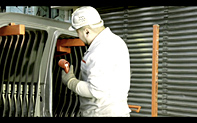
The pressed parts undergo regular visual and tactile checks, examined for errors to the micrometer. Final judgments on quality are made by the team of press machine operators.

